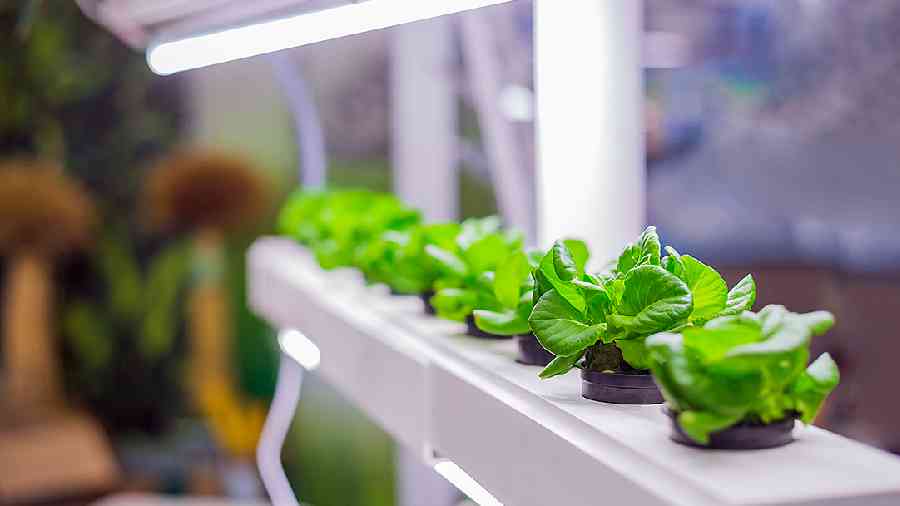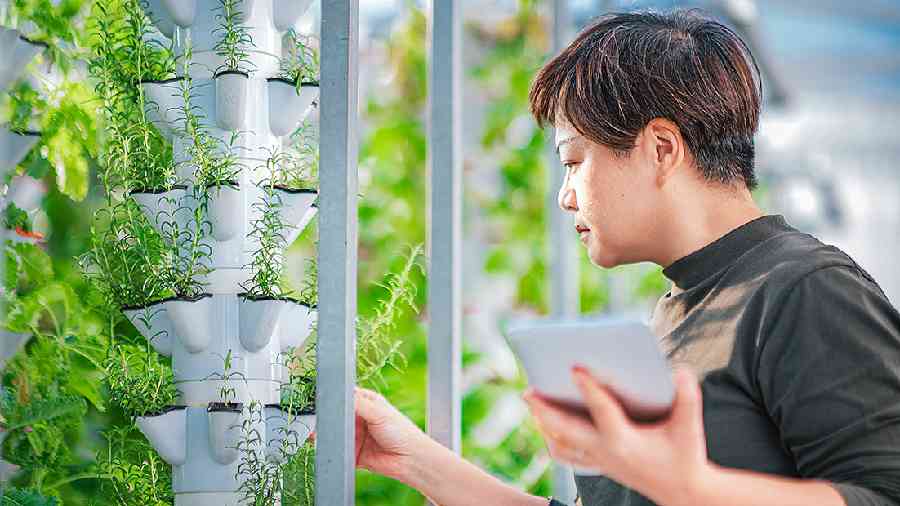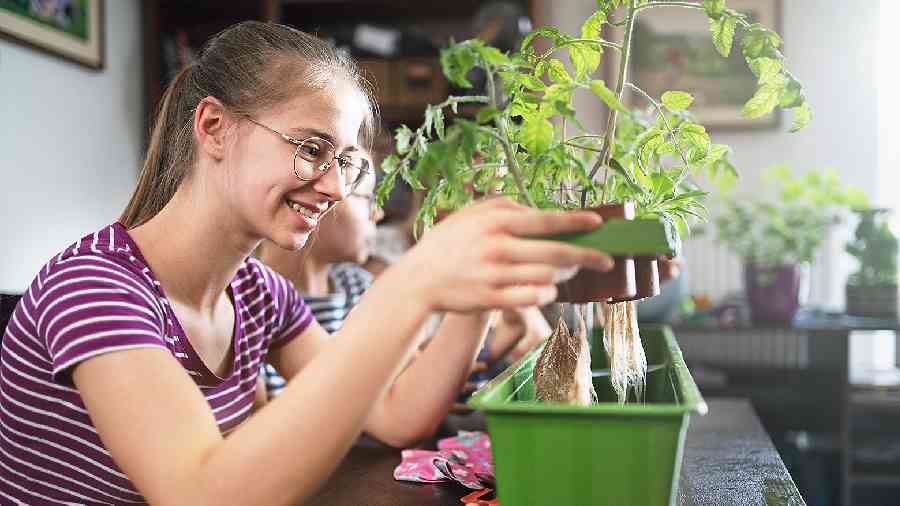As urbanites, we all crave for some greenery. Are you someone who has always wanted your own green produce? If yes, then what’s stopping you? Lack of space, lack of knowledge, or do you think it’s a lot of work? Whatever your situation, there’s one thing I can assure you — you need neither. Puzzled? Let’s get introduced to the concept of hydroponic gardening.Imagine the space outside your doorstep filled with greens. We’re talking about having real and lively plants wherever you want to see them.They could be in a room ,perhaps your office desk or even the bathroom for that matter.
As kids we all have studied how photosynthesis works — plants need water, nutrients and sunlight to make their food and grow. The role of soil is to provide these nutrients to the plant. However, thanks to science, it is now possible for us to provide these nutrients through water. So, we can safely say that soil is just a medium and can be replaced by an alternative. Thanks to technology, we also have other sources of light for plants.
Just as the name suggests, hydroponic gardening is all about gardening with water. There are plenty of ways of designing this system. We will go through the user-friendly ones and see how easily you can build an aqua garden and watch your plants grow without having to pay attention to them every single day.
How Does Hydroponic Gardening Work?
When you choose to avoid soil and the hassle of watering plants daily, you make arrangements differently. Some alternatives to the soil that you can find in the market are coconut coir/ pine bark/ peat/ growstone. You will also find nutrient solutions (in powdered and liquid forms). Mix it with water and immerse your plant’s roots in the mixture. To go step by step, here’s how you can proceed:
- Plant the seedling in a net pot or a small container with a growing medium.
- The water and nutrient mixture goes in a relatively larger container. In larger setups, you may need an air pump to aerate the water so that the roots do not drown in the water.
- You may provide the plants with exposure to natural sunlight, or set up a fixture of light bulbs at a certain distance from the plant.
- You have now created an environment in which plants receive light, carbon dioxide, water, and nutrients.
- Change the water and nutrient mixture from time to time (mostly weekly or bi-weekly).
- Without any pests, weeds, or soil-borne diseases, you’ll get organic, healthy plants that grow faster.
Create one at Home?
Building up a large system to grow plants may be too technical. However, if you want to have some fun creating a green space in your home or office we have two super-easy methods to share.
Wick System
This system is simple ,you don’t need any electrical equipment to create it. You can use whatever you have at home from jars and trays to buckets and aquariums.
Materials required
- Jar or tray to hold water and nutrients — the reservoir;
- Water;
- Nutrient mix;
- Two cords made of nylon or cotton — the wick;
- A growing medium like coconut coir, perlite, or vermiculite;
- A container to grow the plant — growing tray or net pot; and
- Seedlings
How it Works
- Add water and nutrient mix to the reservoir.
- Use a jar, or a net pot to grow your plant. Alternatively use a tray/basket with holes at the bottom but smaller than the reservoir.
- Connect the holes of the growing tray or net pot using the wicks.
- Place the growing tray on the reservoir, so the wicks are dipped in the water and nutrient mix.
- Add the growing medium along with the seedlings to the growing tray.
- If you plan to grow the plants indoors, you’ll need LED or fluorescent light bulbs to place above the plant at a minimum distance of six or 12 inches, respectively.
- Make sure you change the water and nutrient mix in the reservoir every week.
Plants You Can Grow
- Microgreens
- Rosemary
- Mint
- Basil
- Peppers
Deep Water Culture
This system is also easy to build and easy to maintain as the roots are directly in contact with the water and nutrient mix. You’ll need a big reservoir and an air pump.
Materials required
- A large tray, bucket, or tank — the reservoir;
- A lid to cover the reservoir;
- A drill;
- Water;
- Nutrient mix;
- Air pump with an air stone;
- Net pots to grow the plants; and
- A growing medium like coconut coir, perlite, or vermiculite.

Green plants growing in pots in a hydroponic tank

Hydroponic mint cultivation
How it Works
- You’ll need a bigger reservoir as compared to the wick system. A tank is ideal, though a large tray might also work.
- Fill up the reservoir with water, leaving 1-2cm space on top. Add the nutrition mix to the water.
- Make holes on the lid using a drill that are big enough to place net pots.
- Connect the air pump and the air stone. The former will be plugged and kept outside the reservoir while the latter will be at the bottom of the reservoir.
- Now cover the reservoir with the lid, as the light is only meant to reach the plants, not the water.
- Add the growing medium and seedlings to the net pots and place the net pots on the lid holes.
- You’ll have to change the water and nutrition mix in the reservoir every 14-21 days and also ensure that the water level doesn’t drop too much.
Plants You Can Grow
- Lettuce
- Bok choy
- Kale
- Basil
- Parsley
- Chard
- Okra
- Cabbage
- Broccoli
Are You Willing to Give it a Shot?
Your plants could be anywhere you want them. A jar of mint right on your work desk for you to enjoy its scent while working, or to enjoy its fresh leaf as a mouth freshener when you return from lunch. Or, microgreens in your kitchen, to be used whenever you make a salad. All it takes is a fun day setting it up and two minutes of your time weekly to change the water. Believe me, it’s not rocket science.

Monika Poddar owns plant boutique Chlorofyl. Reach her on @ChlorofylKol on Facebook and @chlorofyl_giftinggreens on Instagram
